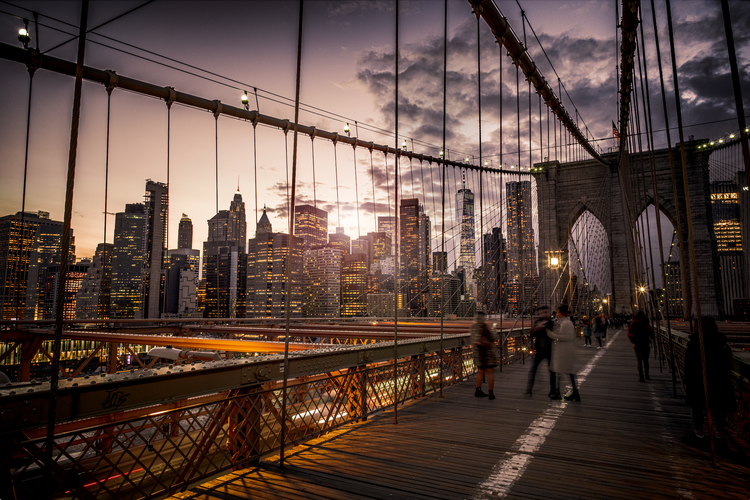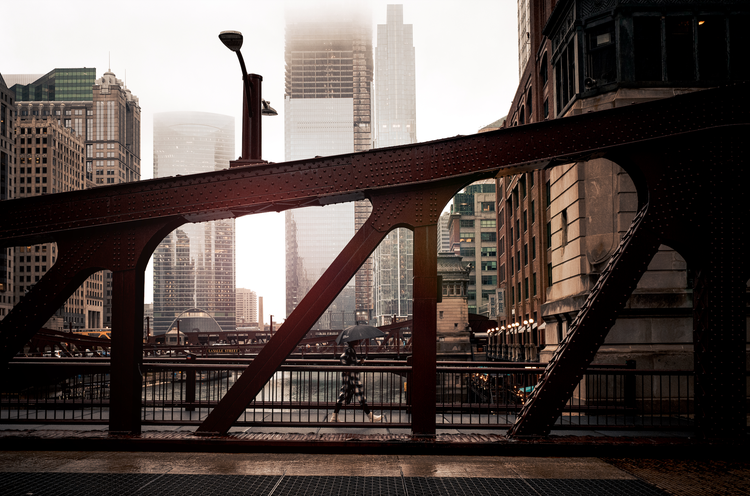Kenneth “Professor” Hines teaches and inspires through photography

Image courtesy of Kenneth Hines, Jr. 2021 Adobe Lightroom splash screen image.
Kenneth Hines, Jr. is an accomplished photographer with decades of experience capturing portraits, landscapes, and cityscapes. But many in the photography community know him better by the moniker of “Professor.”
“My friend Ken Williams started calling me ‘Professor Hines’ about ten years ago,” recalls Hines. “I asked him why he called me that, and he said it’s because I’m always trying to help people. I’ve always been more excited about sharing and building a community than trying to keep things to myself.”
Hines’ passion for both photography and community come across loud and clear when he speaks. It’s why Adobe sponsors his Adobe Lightroom tutorials and why he was named as an ambassador for ZEISS Lenses, Haida Filters, and SIRUI Imaging.
“It’s been great to see so many companies making an effort to support Black artists and creators like myself,” says Hines. “I want to use that opportunity to make an impact on the world and show people of all backgrounds what’s possible.”
In this article
- Building community with the Professor
- Photography that comforts and inspires
- Finding a unique style with Adobe Lightroom
- Going back to the beginning

"New York", image courtesy of Kenneth Hines, Jr.
Building community with the Professor
Hines first experienced the joys of photography on a family trip when he was nine years old. Over nine weeks, his family drove an RV from their hometown of Atlanta, north to Toronto, and then across Canada to Fairbanks, Alaska.
“My aunt gave us kids disposable cameras and told us to fill them up, and I took that to heart,” says Hines. “And I haven’t really stopped since.”
While those first photos focused on beautiful northern landscapes, Hines is most well-known today for his street photography that captures the beauty and diversity of city life.
“I think what makes me stand out from other photographers is that I have passion behind every shot,” says Hines. “I’m always looking at things around me and finding inspiration. Whether I’m working on a fashion shoot or a candid shot of a family on the train, I’m trying to find something beautiful and different.”

"Every Day Life 2022", Reagan National Airport, image courtesy of Kenneth Hines, Jr.
Community strongly influences Hines’ photography. He likes to find inspiration at church, capturing images of worship that show people from diverse backgrounds coming together for a common purpose. “I’m the person that’s always looking around at church,” says Hines. “Whether I’m in the pews or singing with the choir, I love looking around and seeing that there’s always someone different from me sitting next to me. That’s the way the world is and why it’s a joy being among diverse congregations.”
As “Professor Hines,” he also gets fulfillment from teaching and inspiring photographers around the world. Hines teaches classes in person and online, in groups or one-on-one, covering every aspect of photography from choosing the right camera and lenses, to composing shots, to editing photographs with Adobe Lightroom. One tutorial video, The ULTIMATE GUIDE to STREET PHOTOGRAPHY with cinematographer Jason Vong, offers an hour-long deep dive into the ins and outs of street photography.
“Some people couldn’t believe that we were giving away so much knowledge for free, but I thought, why not?” says Hines. “It’s always been my philosophy to share as much as I can. I want people to see that it’s not impossible, that they can be great photographers too.”

"Hawaii", image courtesy of Kenneth Hines, Jr.
Photography that comforts and inspires
Today, Hines likes to explore photography that can make an impact on society. When shooting in Chicago or New York, one of Hines’ favorite subjects to explore is trains. He frequently takes photographs of speeding trains or captures the expressions of riders. By highlighting compelling aspects of the transit system, he hopes to break down prejudices that prevent this convenient, economical, and green form of transportation from flourishing in other areas like his home state of Georgia.
As a well-known Black photographer, Hines also looks for ways that he can help people cope with racial injustice. The sadder things get in the world, the more he pushes for ways to emphasize joy and potential for the future through his photography. After the murder of George Floyd, he posted a photograph of children at church along with the words, “It’s a challenge to be Black in this country, but I didn’t choose to be Black, but I’d never want to be anything else. I’m happy to be who I am and what I am.”
“I’ve had my share of racist encounters over the years, and it can be saddening and disheartening,” says Hines. “But I use those encounters to push myself to become better and inspire new people. Even looking at something as bittersweet as Juneteenth, it’s easy to just see a dark period that set back the progress of Black people. But I also see proof that Black people have the potential to accomplish anything when they’re given an opportunity.”

"Chicago", image courtesy of Kenneth Hines, Jr.
Finding a unique style with Adobe Lightroom
One of Hines’ images of beauty and hope became the face of Adobe Lightroom when it was chosen as the new splash screen for the application in 2021. Lightroom users may remember Hines’ photo of two hands clasped together in front of a colorful, blurred background.
“I don’t know exactly how it got selected,” says Hines with a laugh. “When I started working with Adobe on my Lightroom lessons, I submitted several images to Adobe that could be used for various things like interactive tutorials. Next thing I knew, my image was selected to be on the splash screen, which was really exciting. I think Adobe recognized what I felt when I took the photo: the happiness and hope of people coming together.”
Hines has worked with Adobe apps for years, including Adobe Photoshop, Adobe Premiere Pro, and Adobe After Effects. But his first stop when editing photos is always Adobe Lightroom.
“Frankly, my photos wouldn’t be as great without Adobe Lightroom,” says Hines. “Editing isn’t about fixing an image; it’s about adding your own creative style. And Lightroom is the only app that can produce that distinctive ‘Professor Hines’ style.”
Hines loves to play with color in his photos, emphasizing key colors in the image to make his subjects stand out. Color grading and tone curve are therefore his most used features. Combined with masking, which allows him to be even more specific about where he applies color, Hines transforms his photographs from standard cityscapes to a world that looks vibrant and alive.

"New York II", image courtesy of Kenneth Hines, Jr.
Hines collects some of his favorite presets into collections sold through his Etsy store, but he hopes that his customers don’t settle for just using his presets as-is. Instead, he wants people to use them as starting points to understand how Lightroom’s settings work and how people can use these settings to develop their own unique style.
“I’m really excited about the new Preset Amount Slider because I think it will give people even more flexibility in how they can use presets for images,” says Hines. “I think we’ll see photographers using presets in more creative ways. They’ll have preset collections that they can use over and over again but adjust the amount to get a unique look for every image.”
Going back to the beginning
To celebrate two decades of photography, Hines’ plans to return to his roots: photographing the beautiful Canadian landscape that first inspired him. Hines will also continue teaching what he has learned about photography through online and in-person classes.

"Every Day Life 2020", West Virginia, image courtesy of Kenneth Hines, Jr.
“Adobe Lightroom has so much power to push and pull those little details that other programs don’t provide, but a lot of people don’t fully grasp what you can do with the controls,” says Hines. “It’s fun to teach people how to use things like color grading and tone curve to make their photography even better.”